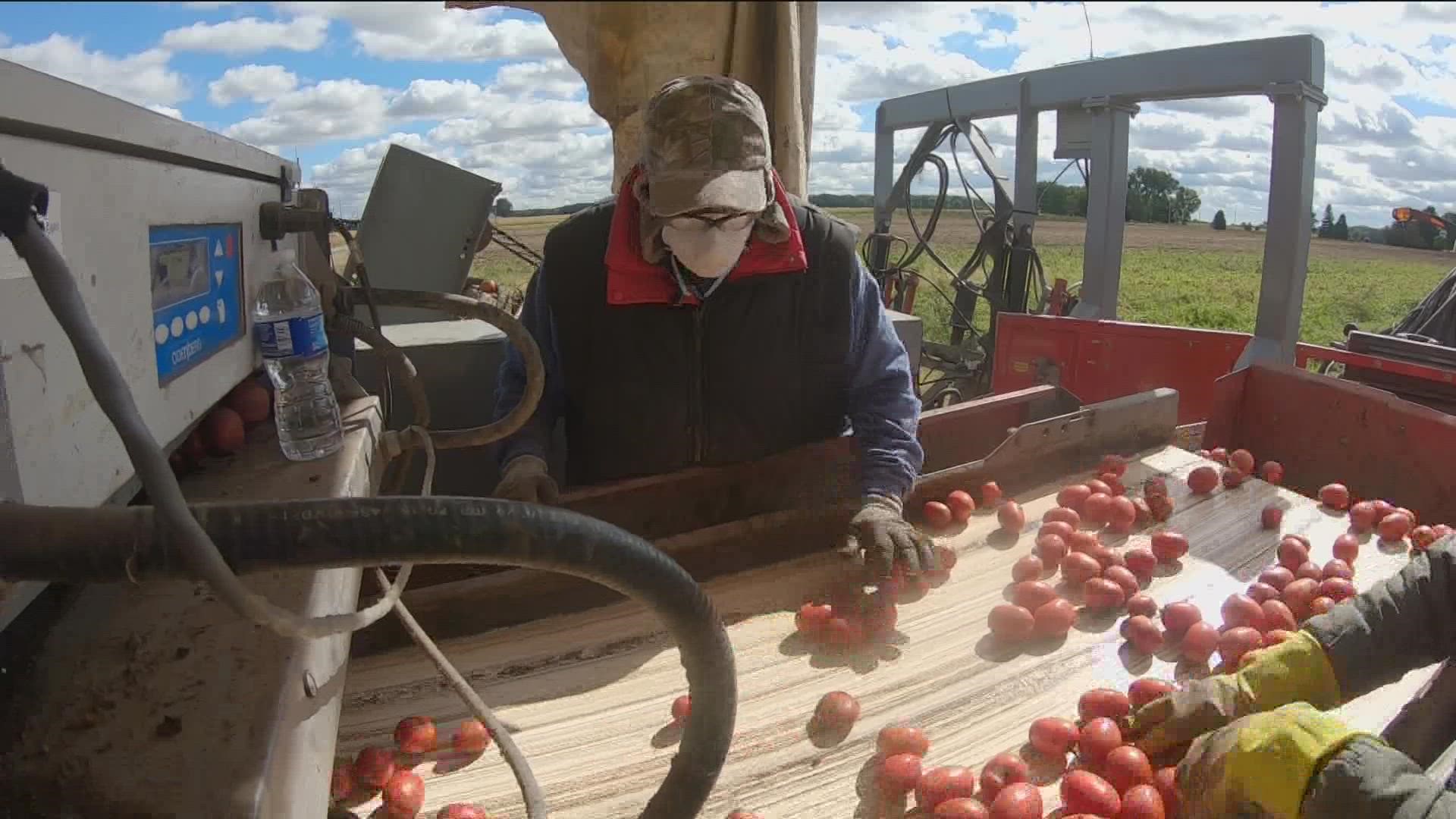FULTON COUNTY, OHIO, Ohio — Fall means it's harvesting season across northwest Ohio and southeast Michigan, and farmers are picking their corn, soybeans, and tomatoes, among other crops.
In Fulton County, Tommy Herr runs the fifth generation Triple H Farm. They plant 27 hundred acres of corn, soybeans, wheat, and tomatoes. They also pick between five to eight truckloads of tomatoes a day and ship them to Hirzel Canning, where they’ll become Dei Fratelli salsa.
The tomato plants were grown in a greenhouse, then brought outside in May and June. Thanks to exceptional weather this year, Herr said crops have been exceptional too.
This year’s been super," Herr said. "Last year, we were tested by a little wet fall but our varieties have changed over the years, looking at northwest Ohio research companies have given us newer varieties, something that produces.”
How do tomatoes get picked? Triple H Farm uses what’s called the Pik Rite Harvester. It cuts the tomato plants off about an inch below ground level. Then, they move up a conveyor and the process gets "high tech," Herr said.
“I’m going to describe it like two hair brushes," he said. "It goes underneath one hair brush and the tines are about a foot long and they’ll shake and vibrate as the plant continues to go through, then it goes over the next brush it shakes and all the fruit falls down on the belts.”
The tomatoes go through electronic sorters that only allow red tomatoes to pass, while green or damaged fruit get dropped below. Then, they’re sorted by hand to eliminate more waste.
Usually, Triple H Farm gets about 30 tons of tomatoes per season. But this year, Herr said they've had 40 tons.
They’ll wrap up the harvest in mid-October, then start picking corn and soybeans into November.

